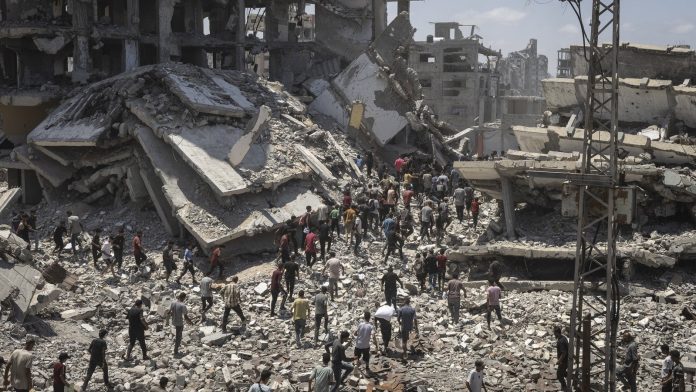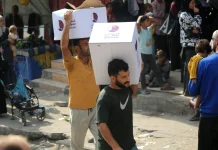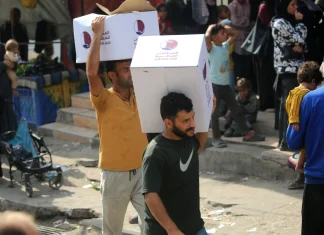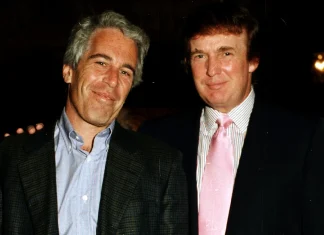The Invisible Frontline: How Israeli Media Portrays Gaza’s Humanitarian Crisis
In an age where global news permeates every home through the relentless buzz of screens and social media feeds, the horrors unfolding in Gaza have gripped the world’s collective conscience. The images are tragic and unforgettable: emaciated children clinging to fragile hope, bloodstained body bags laid out in morgues, survivors navigating the rubble of a fractured existence. Yet, amid this global outcry, a quieter, more complex story brews—one about silence and selective vision within Israel itself.
How does a nation that is so physically proximal to Gaza—with its families, with its sounds and pain—choose to report, or not report, this humanitarian catastrophe internally? For many in the West and beyond, the immediacy of the Gaza crisis feels omnipresent. But inside Israel, the narrative is markedly different.
A Media Wall of Silence
Orly Halpern, a seasoned freelance journalist who has navigated the Israeli media landscape for most of her life, offers a candid assessment: “For the most part, it simply isn’t being covered.” She leans back, her voice tinged with frustration as she describes the paradox confronting Israelis who tune into their domestic news.
“What they see are images of Israeli soldiers and the widespread destruction in Gaza, but almost never any direct voices or faces of Palestinians,” she explains. “You don’t see Palestinians. You don’t hear Palestinians. It’s as if they do not exist.”
Halpern’s observations resonate deeply with the wider reality of Israeli media coverage, which often skirts the humanitarian narratives from the ground in Gaza. Instead, the focus is skewed towards military operations, security concerns, and the suffering of Israeli civilians, particularly those taken hostage in recent violent incursions.
“There’s a collective reluctance,” she continues thoughtfully, “to confront the uncomfortable truths about what their own military and government actions have wrought. It’s easier, safer, emotionally less threatening to consume the narrative that places the blame squarely on Hamas.”
The Hunger Crisis: A Grim Reality Marginalized
The United Nations has issued urgent warnings about Gaza’s spiraling catastrophe—families grappling with starvation, deprivation compounded by war. The hunger crisis here is no abstract tragedy; it is a brutal daily reality. Yet, in Israeli broadcasts, stories that expose this suffering are few, and when they appear, they are frequently framed to invoke suspicion or disdain.
Halpern recalls one particularly jarring reportage moment: “When you see desperate Gazans crowding aid trucks, the narrative often suggests they are desperate ‘like animals’—stripping away their humanity instead of highlighting their dire need.”
Such framing tacitly reinforces divisive perceptions and dissolves empathy, pushing viewers to dismiss the Palestinian civilian toll as collateral consequences rather than urgent moral concerns.
The Rise of Channel 14: Echoes of Hardline Nationalism
In this media landscape dominated by caution and selective storytelling, a new player has risen—Channel 14, an ultra-nationalist TV outlet backed by political heavyweights like Prime Minister Benjamin Netanyahu. It is fast crowding out traditional channels to become Israel’s second-most-watched news source, according to Reporters Without Borders.
Channel 14’s approach is stark: aggressive rhetoric and blunt nationalist messaging that frequently overtly dehumanizes Palestinians. Host Shimon Riklin’s chilling on-air declaration, “We should supply them with neither water nor electricity. Let them drop dead in there!” exemplifies a visceral rage seeping into mainstream discourse.
While Channel 14 vehemently denies allegations of incitement or promoting violence, their fervent editorial line reveals a dimension to Israel’s internal media conversation—a channel where anger, grief, and uncompromising political stances converge.
The Voice in the Wilderness: Haaretz’s Persistent Journalistic Integrity
Against this backdrop, there is one media institution that holds a contrasting position: Haaretz, Israel’s oldest daily newspaper. Though its readership is comparatively modest, its influence—domestic and international—is profound.
Haaretz does not shy away from exposing the grim layers beneath the conflict, highlighting Palestinian suffering and scrutinizing Israeli military conduct with rare candor. Columnist Gideon Levy voices the frustration of many independent observers:
“This is not about politics; it’s about professional journalism. If you open any mainstream Israeli media, you’d believe Gaza is inhabited only by hostages—nothing else, no victims, no human cost,” Levy criticizes with palpable indignation.
His disdain for the broader media’s selective blindness echoes the urgency of a deeper reckoning. He refuses the common explanation that censorship stifles this coverage, saying instead it is a voluntary choice, a collective appeasement to a fearful or unwilling audience.
“We used to mock Russian media for their coverage of Ukraine,” he points out, “but Israeli media is worse because it is free to publish. They just choose not to.”
Silenced But Not Defeated: Intimidation Shadows Press Freedom
Freedom of the press in Israel is increasingly fraught, though the restrictions are less overt and brutal than in some countries. Dr. Ayala Panievsky, a researcher at City, University of London specializing in media censorship, describes a more insidious form of suppression.
“There’s no storming of newsrooms or imprisonment—yet—but the threat is real,” she warns. “Journalists face financial pressures, lawsuits, and an atmosphere of public hostility orchestrated through government allies. The climate fosters self-censorship.”
This observation is supported by Reporters Without Borders, which reports Israel’s decline in the 2023 World Press Freedom Index, slipping from 86th to 112th place amid rising disinformation and repression, particularly for Arab and foreign journalists operating within the country.
Between National Trauma and Social Complicity
What keeps the Israeli media from fully embracing the picture of Gaza’s suffering? Dr. Panievsky suggests that the traumatic events of October 7, when Hamas-affiliated militants murdered civilians and took hostages in brutal attacks, profoundly shape national consciousness.
“Israeli media excellently covers Jewish suffering. That’s the story they tell—a comprehensively reported tragedy that grips hearts. But the other side, the Palestinian side, recedes into shadow,” she reflects. “In war, empathy is selective. But ignoring these victims impedes truth and healing.”
Orly Halpern adds a personal dimension to this collective denial. “Most Israeli men serve reserve duties into their 40s. It’s hard to face the full implications of the war when you are personally tied to it. People want to believe they are doing right, even if deep down they sense the cost.”
She quotes a haunting Hebrew expression—“יורים ובוכים (shoot and cry)”—that captures Israel’s conflicted reality: the simultaneous infliction of harm and emotional sorrow. Yet, she mournfully confirms, “Now, mostly, we’re just shooting.”
Reflections: What Does It Mean to See, to Acknowledge, to Report?
For global observers, the Israel-Gaza conflict often unfolds as a cascade of statistics and statements—232 days since the latest flare-up, thousands dead, millions displaced. But how often do we stop to ask: what stories remain untold? What faces remain unseen? Why do even close communities sometimes choose blindness?
The Israeli media’s paradox reveals a universal tension: how do societies balance nationalism, trauma, and truth? How do they reconcile identity with accountability? How does the story of one people’s suffering overshadow or suppress others? This isn’t just a tale about Israel or Gaza—it’s a cautionary reflection on the human condition in conflict.
Perhaps understanding this media silence is an invitation to each of us—to seek the missing voices, to approach headlines with nuanced curiosity, and to remember that in every conflict, the human cost extends beyond borders and broadcast limits.
Key Takeaways
- Israel’s mainstream media largely avoids humanizing Palestinians or covering the full humanitarian crisis in Gaza.
- Ultra-nationalist outlets like Channel 14 amplify aggressive rhetoric, fueling polarization.
- Haaretz offers critical, empathetic reporting but faces political and economic pressures threatening its independence.
- Formal censorship is limited, yet political intimidation and financial threats foster self-censorship among journalists.
- National trauma and military service contribute to public reluctance to confront uncomfortable truths.
- Globally, this media dichotomy underlines challenges in reporting conflict with balance, empathy, and transparency.
So, as we scroll and click in the comfort of our homes far from the frontline, let us ask ourselves—what narratives do we embrace? Whose stories are we hearing? And what might be the cost of choosing not to look?










